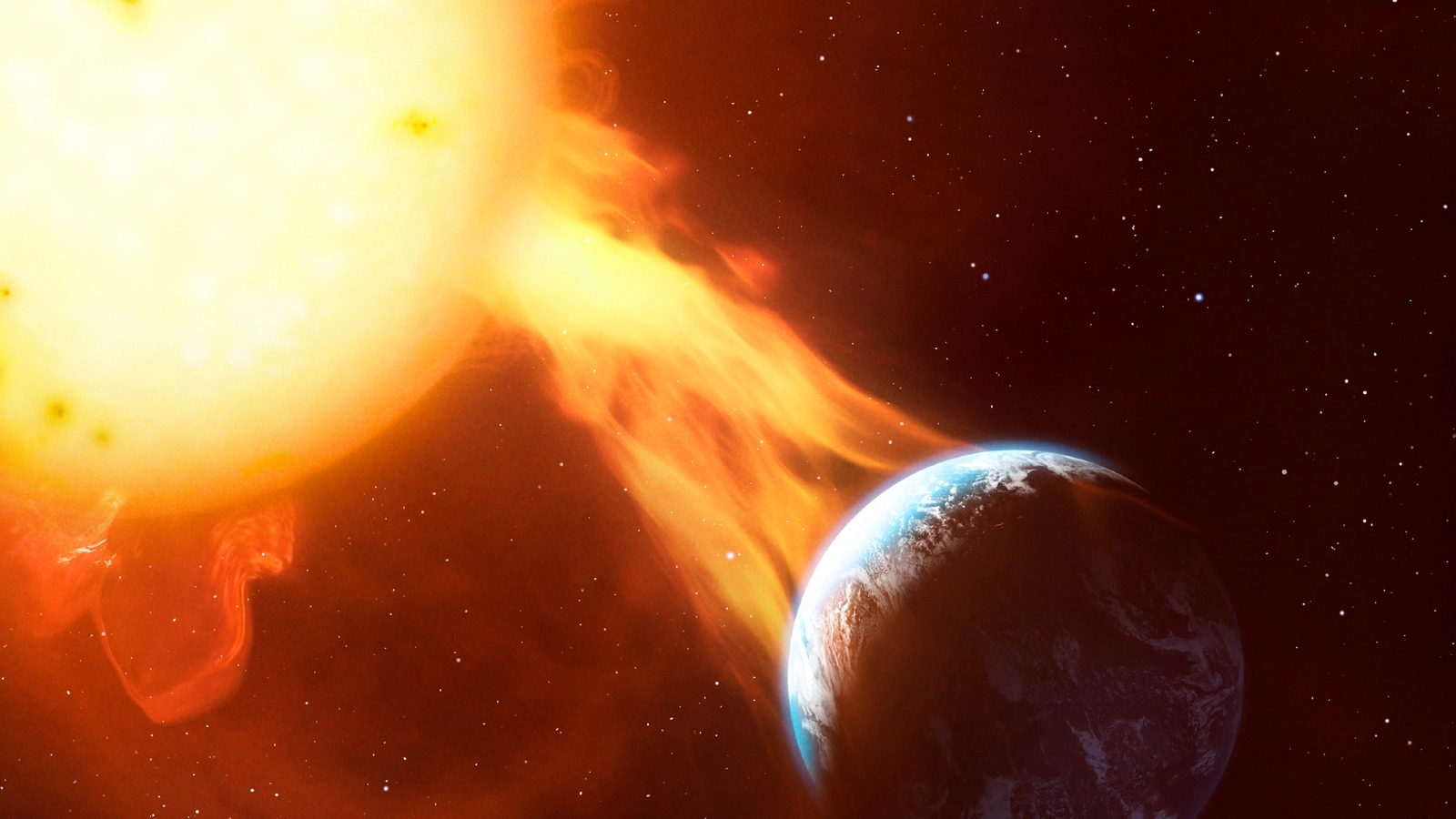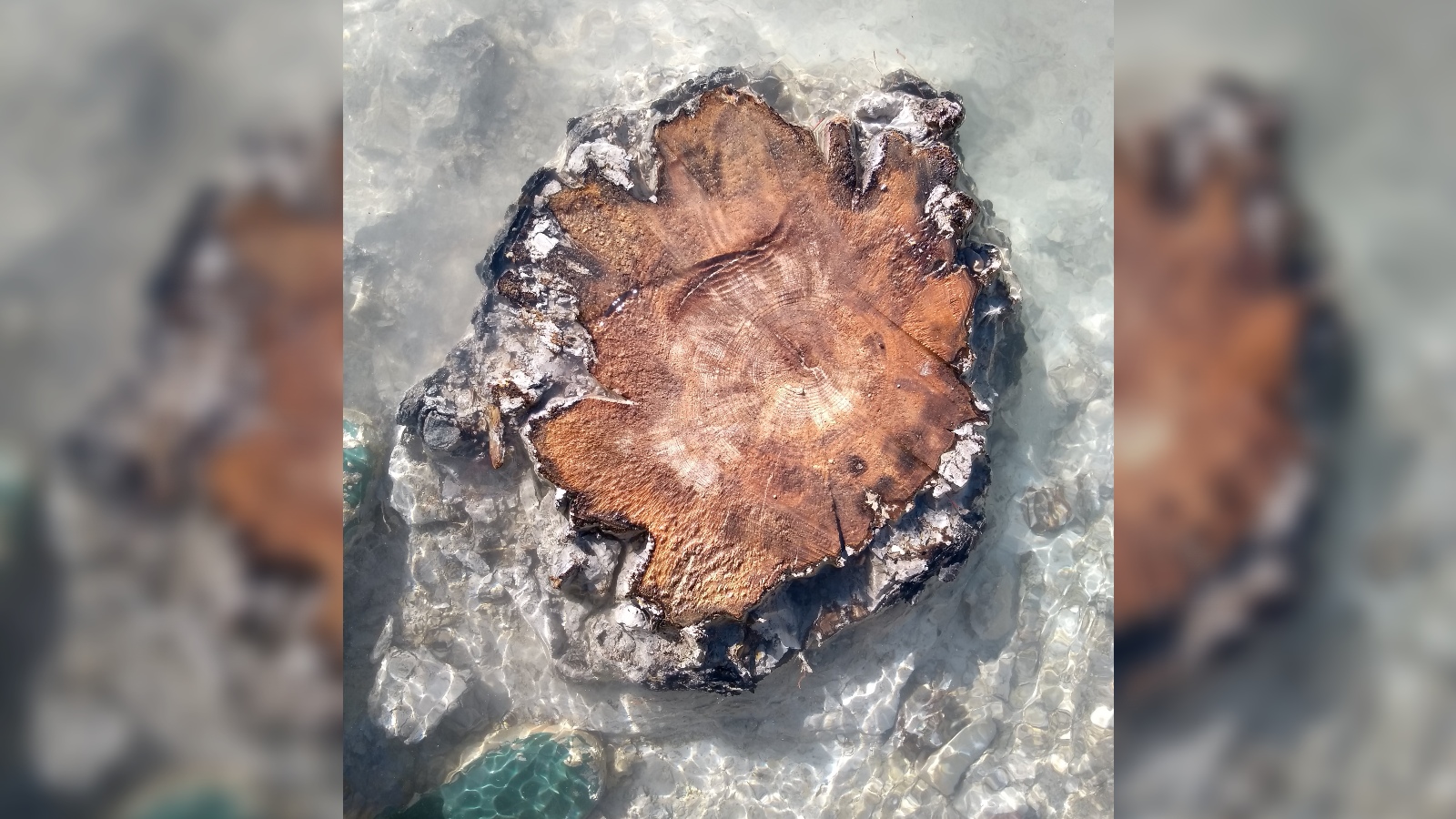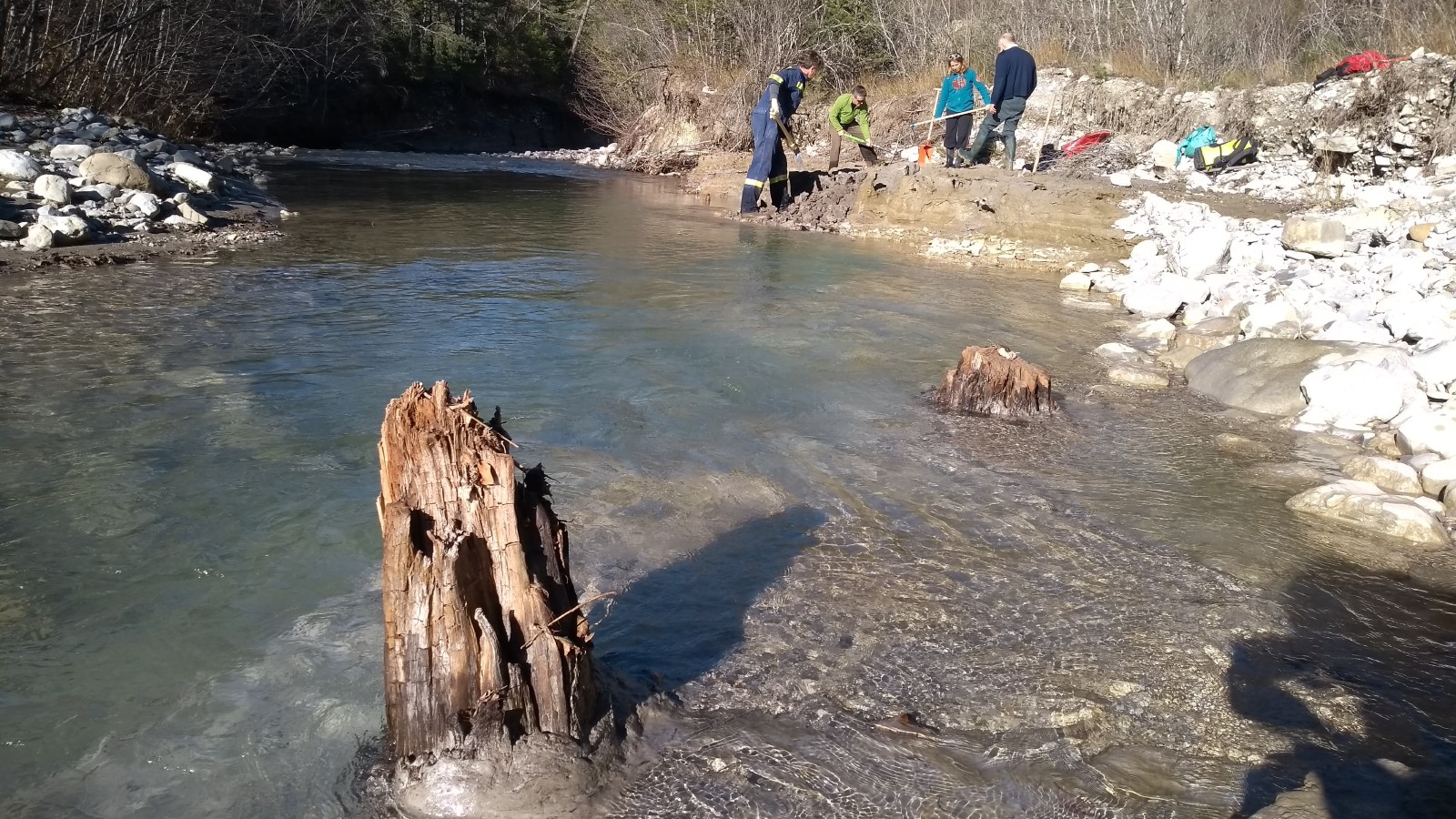Ancient superpowered solar storm that hit Earth 14,000 years ago is the 'biggest ever identified'
High radiocarbon levels in the rings of subfossil tree stumps suggest that an incomprehensibly powerful solar storm, known as a "Miyake event," smashed into our planet more than 14 millennia ago.

Earth was bombarded with an enormous dose of cosmic radiation more than 14,000 years ago, newly discovered tree rings reveal — and researchers suspect it was caused by an enormous, superpowered solar storm, the likes of which we have never seen before.
In a new study published Oct. 9 in the journal Philosophical Transactions of the Royal Society A: Mathematical Physical and Engineering Sciences, researchers analyzed tree rings cut from subfossil, or partially fossilized, tree stumps in the French Alps. The ancient trees, which were preserved by the sediment of a river bed, all have high levels of radiocarbon in a single year's ring dating to roughly 14,300 years ago.
Radiocarbon, or carbon-14, is an isotope of carbon with extra neutrons and is produced when cosmic rays hit nitrogen atoms in the atmosphere. High radiocarbon levels in a tree ring suggest there was a spike in cosmic rays around that time. The time the spikes occurred in these rings matches findings from ice cores that were recently unearthed in Greenland, which showed high levels of the element beryllium from the same period. Beryllium is most commonly created by cosmic rays slamming into the nuclei of other elements.
Researchers think the radiation spike came from a massive solar storm, most likely triggered by a fast-moving cloud of magnetized plasma and radiation known as a coronal mass ejection (CME) that was launched into space by a humongous solar flare. What the gigantic storm would have looked like is beyond our current comprehension.
If true, it would make the storm "the biggest ever identified" coming from the sun, the researchers wrote in an email statement. "A similar solar storm today would be catastrophic for modern technological society," they added.
Related: 10 solar storms that blew us away in 2022

The researchers are calling the ancient solar storm a Miyake event — a gigantic type of solar storm that has never been directly observed but leaves evidence in the fossil record. So far, at least six but potentially up to eight other Miyake events have been detected from tree rings or geological evidence across the globe, with the most recent occurring approximately 1,030 years ago.
Sign up for the Live Science daily newsletter now
Get the world’s most fascinating discoveries delivered straight to your inbox.
The largest directly-observed solar storm was the Carrington Event, which erupted from a monstrous sunspot on the solar surface in 1859. This storm was not capable of producing the levels of radiation seen in the tree rings, but it did produce an enormous, bright flare that was visible to astronomers on Earth for around five minutes and had the equivalent energy of around 10 billion 1-megaton nuclear bombs.
Miyake events are believed to be "several orders of magnitude" greater than the Carrington Event, the researchers wrote. Scientists think the most recent Miyake event was around 80 times more powerful than the Carrington Event, Live Science previously reported. But the newly discovered superflare could have been twice as powerful again, researchers wrote.

If an equally powerful solar storm smashed into Earth today it would be disastrous.
"Such super storms could permanently damage the transformers in our electricity grids, resulting in huge and widespread blackouts lasting months," study co-author Tim Heaton, a radiocarbon expert at the University of Leeds in England, said in the statement. "They could also result in permanent damage to the satellites that we all rely on for navigation and telecommunication, leaving them unusable."
Related: Could a solar storm ever destroy Earth?
Miyake events may have also played an important role in our evolution. Past research suggested that cosmic rays spat out by superflares could have sparked the beginning of life on Earth.
We have no real idea what Miyake events look like, or if we would be able to tell if one was coming before it was too late. Similar superflares have been observed erupting from distant stars, but this provides limited information about our own sun.
The new discovery highlights that "we still have much to learn about the behavior of the sun and the dangers it poses to society on Earth," the researchers wrote.
The sun is currently nearing a peak in its roughly 11-year solar cycle, known as the solar maximum, when solar activity such as solar flares and CMEs become much more common. There is no indication that this increases the extremely long odds of the sun producing another superflare. However, researchers have predicted that Miyake events could occur roughly every 1,000 years, so it may not be too long before we witness another one.

Harry is a U.K.-based senior staff writer at Live Science. He studied marine biology at the University of Exeter before training to become a journalist. He covers a wide range of topics including space exploration, planetary science, space weather, climate change, animal behavior and paleontology. His recent work on the solar maximum won "best space submission" at the 2024 Aerospace Media Awards and was shortlisted in the "top scoop" category at the NCTJ Awards for Excellence in 2023. He also writes Live Science's weekly Earth from space series.










